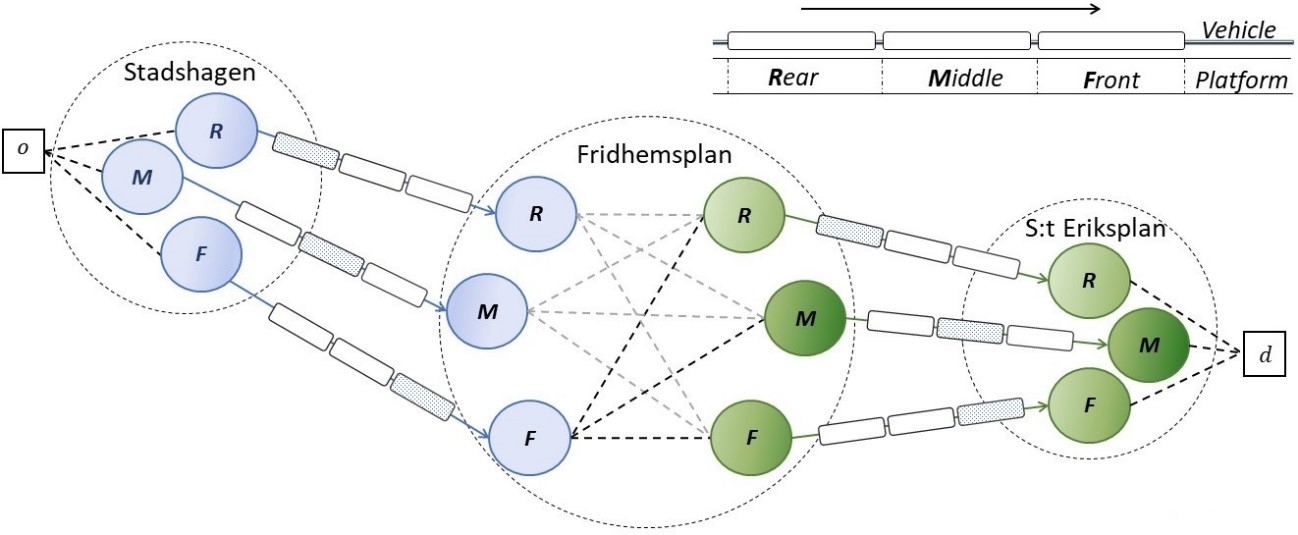Modelling the relations between crowding at transfer nodes and in vehicles

Many stations and stops in Stockholm's public transport system are heavily crowded. There is an important interaction between crowding on stations and in vehicles. High crowding in the vehicles is associated with many negative consequences, such as low comfort, risk of not getting on the train, and delays. The purpose of this project is to develop a quantitative method for evaluating how the design of stations and interchanges affects the crowding of vehicles. The objective is to increase the understanding of how station design and passenger flows interact and affect the accessibility and crowding of vehicles. With the developed method, different designs of new or refurbished stations can be evaluated in an early planning stage in an objective and systematic manner. The actual capacity utilization of vehicles can be analyzed more realistically than before, considering that travelers generally do not distribute themselves evenly between all the train cars. A model for flows between different platforms within a transfer point will be developed and linked to a simulation model for public transport. The simulation model will be developed to capture the congestion in each vehicle and car. Simulation of passenger flows in public transport and between platforms will be integrated. The method will be applied to several stations in Stockholm's public transport network.
Period: 2017-01-01 – 2018-12-31
Funders: Stockholm City Council (SLL), KTH Centre for Transport Studies (CTS)
Project leader: Erik Jenelius
Participants: Soumela Peftitsi , Oded Cats
